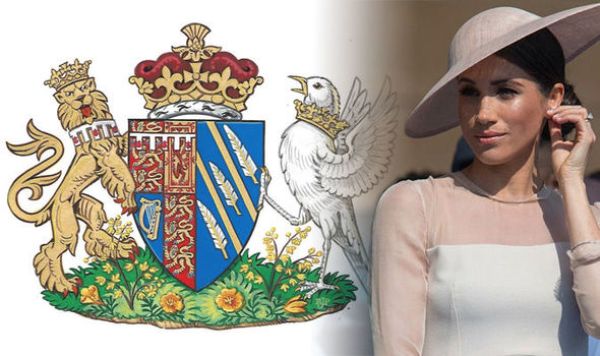Meghan Markle has been honoured with a coat of arms as the Duchess of Sussex after she was welcomed into the Royal Family following her wedding to Prince Harry.
Kensington Palace statement said: “A Coat of Arms has been created for The Duchess of Sussex.
The design of the Arms was agreed and approved by Her Majesty The Queen and Mr Thomas Woodcock (Garter King of Arms and Senior Herald in England), who is based at the College of Arms in London.
“Her Royal Highness worked closely with the College of Arms throughout the design process to create a Coat of Arms that was both personal and representative.”
Meghan’s Coat of Arms features a songbird symbolising the “power of communication” and it has been joined with Prince Harry’s royal lion Coat of Arms, as is protocol for royal wives.
The Queen bestowed the title of Duke of Sussex on Prince Harry before the Royal Wedding and Meghan became the Duchess of Sussex when she married the Prince in a historic and romantic ceremony last Saturday.
Meghan’s Coat of Arms was also approved by the Queen before it was unveiled today by Kensington Palace.
The Arms features nods to her home state of California as well as her new life as a member of the Royal Family.
The blue background of the shield represents the Pacific Ocean while two golden rays symbolise the famous Californian sunshine.
Beneath the shield on the grass also sits a collection of golden poppies which are California’s state flower.
Meghan’s Coat of Arms also incorporates her new life in the Royal Family with wintersweet flowers, which grow at Kensington Palace.
They feature alongside the golden poppies and a Coronet has also been assigned to The Duchess of Sussex.
The Coronet bestowed on the new Duchess was laid down by a Royal Warrant of 1917 for the sons and daughters of the Heir Apparent.
It is composed of two crosses patée, four fleurs-de-lys and two strawberry leaves.
Thomas Woodcock, Garter King of Arms, who designed the Meghan’s Coat of Arms said: “The Duchess of Sussex took a great interest in the design.
“Good heraldic design is nearly always simple and the Arms of The Duchess of Sussex stand well beside the historic beauty of the quartered British Royal Arms.
“Heraldry as a means of identification has flourished in Europe for almost nine hundred years and is associated with both individual people and great corporate bodies such as Cities, Universities and for instance the Livery Companies in the City of London. ” (NAN)

